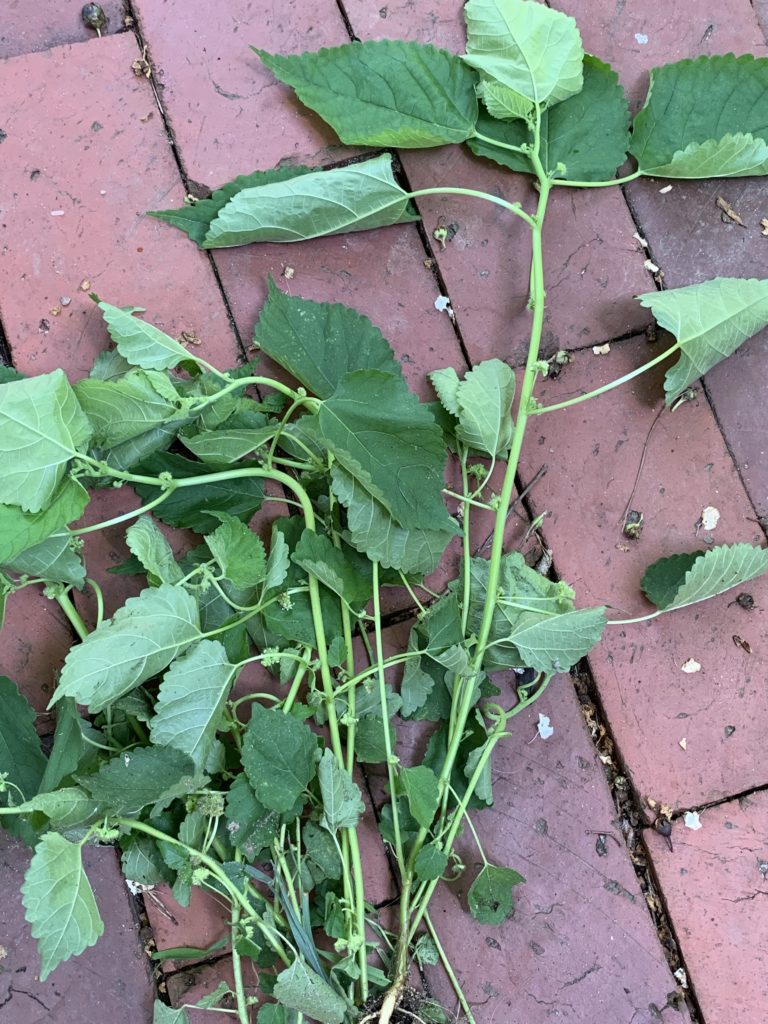Mulberry Weed a Hairy Invader

By Maria Price
Gardeners should know how to identify mulberry weed as it needs to be controlled. Also known as hairy crab weed, Fatoria villosa, resembles the seedlings of mulberry trees but the weed has hairy stems, making it easy to differentiate.
Mulberry weed grows up to one foot tall, with alternating toothed leaves, indented with prominent veins. Its hairy and yellow-green leaves are triangular, with a petiole about half the length of a leaf blade. The flowers are tan pea-sized clusters at each node. The flowers appear when the plant only has three leaves. Even plants that are two inches tall can still produce copious amounts of seeds. It is believed that the seeds are explosively discharged up to 4 feet from the original plant.
Everyone should be aware of this noxious weed as it spreads like crazy. I first noticed this weed about five or six years ago, and now it sprouts up in my garden almost everywhere. I was so pleased to have weeded it out in early summer, only to have it return in the last couple of weeks with all the excessive heat and rain.
In our area, mulberry weed can have two to five generations per year from April to November. It can also grow up to 4 feet tall when undisturbed. It flowers in late summer to fall. The seeds remain viable in soil for several years, but require light for germination. One way to control it is to add 2 to 3 inches of mulch to your garden beds.
Horticulture intern Sarah Coffey of Lewis Ginter Botanical Gardens in Virginia calls mulberry weed one of the “dirty dozen” plants that are invading our gardens. She reports that the plant has been found in the garden beds at Lewis Ginger but only in California, Alabama and Georgia, is it included on a list of invasive species.
Mulberry weed was accidentally introduced from East Asia during the transport of imported goods and the return of equipment from WWII. It was first documented in 1964 in Louisiana, but it wasn’t until the 1990s when it began being noticed in nursery stock being shipped across the country. It likes moist, shady environments, which is one of the reasons why it thrives in greenhouses, nurseries and heavily irrigated agricultural fields. With its love for shade and moisture, it has a potential for invading our woodlands.
I carry a plastic bag with me when I’m weeding and drop any mulberry weeds that I find into the bag, being careful not to drop any seeds. Then the bag goes in the trash. Do not put mulberry weed in your compost as the temperatures don’t get high enough to kill the seeds. Try to remove any of its plants before it flowers and set seeds.
If we learn to recognize it and remove it as quickly as possible, we increase our chances of preventing it taking over native plant communities.
